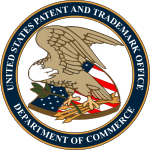 Last month, in an opposition brief filed by attorneys for the U.S. Patent and Trademark Office and Department of Justice, the Office asked the Supreme Court to deny petitioner's writ of certiorari in Finjan, Inc. v. United States Patent and Trademark Office. The question presented by petitioner was:
Last month, in an opposition brief filed by attorneys for the U.S. Patent and Trademark Office and Department of Justice, the Office asked the Supreme Court to deny petitioner's writ of certiorari in Finjan, Inc. v. United States Patent and Trademark Office. The question presented by petitioner was:
Whether, in proceedings to determine whether a patent application should be granted, the United States Patent and Trademark Office bears the burden of demonstrating that a prior art printed publication that anticipates the invention for which the patent is sought enables a person of skill in the art to practice the invention.
As the Office outlines in its brief, the case involves U.S. Patent No. 6,167,520, entitled "System and method for protecting a client during runtime from hostile downloadables," which issued December 26, 2000. In 2007, the Office granted a request for ex parte reexamination, and in 2009, the examiner rejected all of the claims as being anticipated by a single reference (the Endrijonas reference). Finjan appealed the examiner's rejection to the Board, arguing that the Endrijonas reference did not enable persons of skill in the art to practice the invention, but the Board affirmed the examiner's rejection in 2011, determining that Finjan had failed to establish that the Endrijonas reference was not enabling. Finjan then appealed to the Federal Circuit, where it argued that the examiner, in initially rejecting the claims, had not established that the Endrijonas reference was enabling, and that the burden of demonstrating that the Endrijonas reference was not enabling should not have been placed on the applicant. Following the Federal Circuit's decision in In re Antor Media Corp., where the Court indicated that it had long held that when an examiner rejects a claim as being anticipated by a prior art patent, the patent is presumed enabling for purposes of the examiner's prima facie showing of anticipation, the Court affirmed the Board's decision without opinion.
In response to Finjan's contention "that 'the examiner should bear the burden of proving that an alleged anticipatory reference is enabled' when that reference is a printed publication," the Office argues that such contention "lacks merit," and that "[f]urther review is not warranted." The Office notes that "[o]nce the examiner makes an anticipation rejection in compliance with Section 132, the burden is on the applicant to demonstrate that the rejection was erroneous," adding that "[o]ne way in which the applicant may do so is by establishing that the prior art reference's disclosure would not enable one skilled in the art, without undue experimentation, to practice the invention for which the applicant seeks a patent." With respect to the presumption of enablement, the Office argues in its brief that the presumption:
[R]eflects the Federal Circuit's recognition that requiring the examiner preemptively to make the detailed findings necessary to verify enablement would be "manifestly inefficient," "burdensome," and "entirely unnecessary." Jung, 637 F.3d at 1363. Because the enablement inquiry requires an analysis of the degree of experimentation necessary to implement an invention, "an examiner, who has no access to experts or laboratories, is not in a position to test each piece of prior art for enablement in citing it, and requiring him to do so would be onerous, if not impossible." Antor, 689 F.3d at 1288.
While noting that Finjan "recognizes that the presumption of enablement is justified when the allegedly anticipatory reference is an existing patent because an issued patent necessarily reflects the PTO's determination that the patent's disclosures enable the invention," the Office states that Finjan contends, by contrast, that "printed publications 'do not go through the same scrutiny.'" However, the Office argues that:
Whether the prior art is a patent or a printed publication, requiring the examiner to determine whether the prior art enables the creation of the invention without undue experimentation would force the PTO to engage in burdensome preemptive investigation and experimentation in order to anticipate and address enablement issues that the applicant might choose not to dispute. And when the applicant does dispute enablement, he "is in a better position to show, by experiment or argument, why the disclosure in question is not enabling or operative." Antor, 689 F.3d at 1288.
Although the Office acknowledges that "[t]o be sure, the prior PTO scrutiny accorded to an issued patent makes that patent likely, as a practical matter, to be enabling," the brief argues that even when the prior art reference is a printed publication, "the rationale identified by the Federal Circuit in Antor applies with full force," adding that "[i]n any event, if the applicant chooses to dispute enablement, the PTO must address that issue before denying the patent on anticipation grounds."
Finjan's petition and the Office's brief have been distributed for conference on September 30.